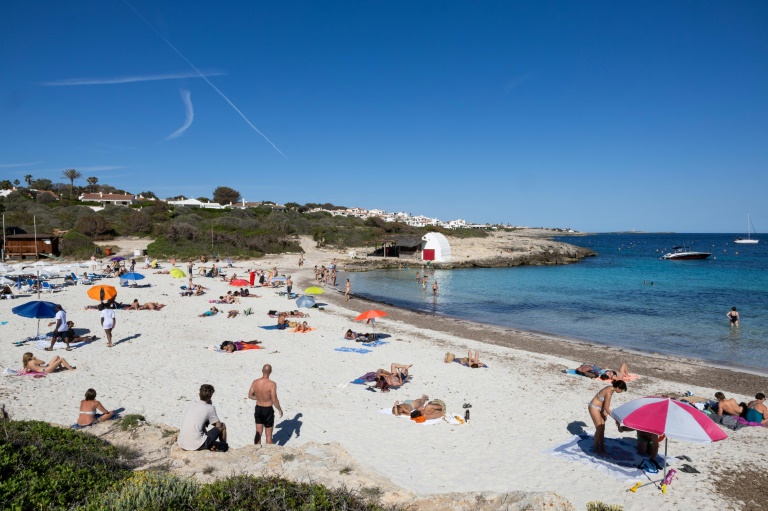The economies of Spain, Greece and Portugal, which were derided as the “Club Mediterranean” during the European debt crisis 15 years ago, are now performing better than those of the Nordic countries thanks to a recovery in the tourism industry.
The three countries had to endure severe austerity measures imposed by European Union member states in the early 2010s, which were quick to blame the economic crisis on fiscal laxity and lack of competitiveness.
But Zsolt Darvas, an economist at Brussels-based think tank Bruegel, said “things have changed” since the end of the COVID-19 pandemic.
“Today, these countries are growing faster than the European Union average and are no longer considered a nuisance.”
Spain’s gross domestic product (GDP) expanded by 2.5 percent last year, while Portugal’s economy grew by 2.3 percent and Greece’s by 2.0 percent.
Advertisement – Scroll to continue
In comparison, the 27-nation European Union is expected to grow by 0.4%, weighed down by a 0.3% contraction in Germany, making it the world’s worst-performing major economy in 2023.
The International Monetary Fund expects the three countries to continue to perform well this year, albeit at a slower pace.
Growth rates this year are expected to be 2.4% in Spain, 1.7% in Portugal and 2.0% in Greece.
Spanish Prime Minister Pedro Sanchez recently said that Spain’s economy is growing “like a rocket.” The country is the EU’s “locomotive” for job creation, he added on Thursday.
Advertisement – Scroll to continue
Economists say the turnaround is mainly due to a strong recovery in tourism, which hit record levels last year after pandemic travel restrictions were lifted.
The sector is important to all three countries, accounting for around 25% of the Greek economy and 12% in both Portugal and Spain.
The three countries are also benefiting from the EU’s massive pandemic recovery fund, but the mix of grants and loans offered in exchange for structural reforms will go mainly to southern countries.
Advertisement – Scroll to continue
Spain, the fund’s largest beneficiary after Italy, has received 38 billion euros so far, Greece 15 billion euros and Portugal 8 billion euros.
Darvas said the three countries had made “significant efforts to increase their economic attractiveness” through structural reforms, making them more competitive and improving their labor markets.
These reforms have helped attract foreign investment, especially in the areas of renewable energy and cloud computing.
Amazon’s cloud computing division AWS said last month it would invest more than 15 billion euros to expand its data centers in Spain.
Advertisement – Scroll to continue
Many automakers, including Volkswagen and Stellantis, whose brands include Peugeot, Fiat and Jeep, have chosen to assemble new electric vehicles in Spain, Europe’s second-largest auto producer after Germany.
But the growth surge in these three countries comes as they are only partially recovering from the sharp declines in GDP during the financial crisis, with Greece’s GDP plummeting by 25 percent.
Advertisement – Scroll to continue
Economists warn that challenges remain.
While unemployment rates are all falling, Greece and Spain’s unemployment rates remain above 11%, well above the EU average of 5.9%.
And former European Commissioner for Economic and Monetary Affairs Olli Rehn told AFP that while “the gap between euro zone countries is smaller than it was 10 years ago”, “deficits and debt levels remain high in some countries”.
Portugal ran a budget surplus of 1.2% of GDP last year, while Greece’s budget deficit narrowed to 1.6% in 2023 from 2.5% the previous year. The EU average is 3.5%.
This has reduced 10-year borrowing rates from 13% during the financial crisis to 3.5%.
Darvas said the “convergence” between southern and northern European countries “will continue” but “will be at a slower pace.” Spain, Portugal and Greece still have “work to do,” he added.

